When you realize that the genocide of Rwanda happened only about 20 years ago, the reality hits you hard. It happened during our lifetime. It’s not just some distant memory you read from history books, like the World Wars, where your grandparents likely fought. It happened just recently and most probably you really didn’t know much about it.
Everything that happened between the 7th of April and 15th of July in 1994 was only an exacerbation of things that had been bubbling under the Rwandan society for decades. We were taught in school that it was an incident where the Hutu majority mass-murdered almost one million Tutsis and moderate Hutus during the approximate 100-day period.
I’ve learned since, that it’s not the whole truth. It was also the other way around and the Tutsis were not entirely innocent, either. But there’s always two sides to a coin, isn’t there?
Background Noise Eventually Leading to the Genocide
The genocide took place in the context of the Rwandan Civil War, which began in 1990. But things that spiked the civil war had been in existence already long before – even back in the times before Rwandan colonial era. But it couldn’t have happened without the time of the Belgian colonialism policy when the colonial masters manically tried to rationalize and re-arrange the African cultures to death.
New borders were drawn, without caring about the old ones, nor about the old, African social and cultural habits. They were just erased. Even after 75 colonial years, the new habits had not enough time to get roots in the African society. When European countries were forced to abandon their African colonialism in the 1960s, the “new society model” wasn’t ready. It just left many African countries in a state where the old is dead and the new hasn’t yet been born. It’s said to be a very dangerous situation and it truly was that, especially for tiny Rwanda.
There are hundreds of books written on this subject and if you want to read some of the best ones, here are my recommendations: Gérard Prunier: The Rwanda Crisis (1959-1994): History of a Genocide. And a must-read book if you want to get a comprehensive insight into what has been (and still is) going on in these parts of Africa: Gérard Prunier: From Genocide to Continental War: The ‘Congolese’ Conflict and the Crisis of Contemporary Africa.
What happened after the genocide was the catalyst that eventually lead to the falling of Mobutu and his Zaire (nowadays known as DR Congo). What happened in Rwanda, was actually a state of total chaos; politically and societally. I think that even today all the members of the notorious Interahamwe, the main perpetrators of the Rwandan genocide, haven’t been caught. That thought gives me shivers.
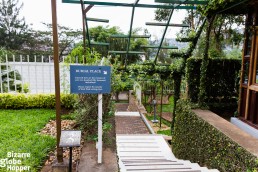
Inside the Genocide Memorial in Kigali
The building of the Kigali Genocide Memorial doesn’t look like much from the outside, but when we stepped inside, the atmosphere changed radically. It felt like the destinies of almost a million people would billow over in one rush. It felt like the place itself would’ve wanted to tell us the saddest story of our lives with the voices of the dead. The first feeling was overwhelming.
The exhibition inside is very detailed and if you can’t bare to look photographs of endless piles of corpses – also of children and elders – this place may not be for you. More often than once during our visit we encountered visitors, who cried openly when walking through the halls. However, it’d be a mistake not to visit here.
Regardless of how absolutely horrible this major crime against humanity was, we tried not to get overwhelmed by emotions. Instead, we tried to concentrate on the facts and into the terrible story that this place wanted to tell us. It wasn’t easy, but I believe that we got more out of our visit that way.
I encourage you to spend some time and get to know the exhibition. Read the boards and have an insight into what happened. Stare Death in the eyes and look at all the rows of skulls in the glass cabins. But – don’t take everything for granted. I urge you to grab one of those books I mentioned before, and you’ll have a deeper understanding of the happenings.
On the Outside, It Is a Mass Grave
When we stepped outside to wander through the garden area, which is actually a mass grave of over 250,000 people, we couldn’t do much more than be silent. On the stone memorial sites, there are always piles of fresh flowers and groups of people who come here to mourn their deceased relatives. The atmosphere of grief hangs heavily around.
In almost every bouquet there is a message saying: “Never again.” Though all the remorse and grief present here, I cannot help thinking about how close it has been, more than once, to still happen again. Rwanda may have learned from their mistake, but the rest of the world certainly has not. Visiting here makes you humble, but it also makes you remember how cruel humans can really be. And that made me ashamed.
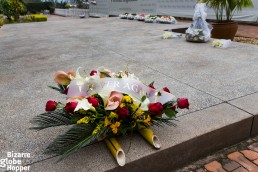
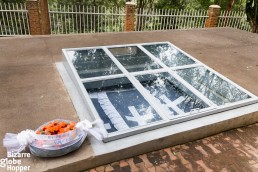
Aftermath Effects of the Rwandan Genocide
Not only did the genocide shatter the whole Rwandan society into pieces which it hasn’t been able to put thoroughly together even today, but it also affected severely to its neighboring countries. Masses of Rwandans became refugees, and many of them fled to the Eastern DR Congo (then Zaire).
The victory of the RPF (Rwandan Patriotic Front) over the genocidal acts in mid-July 1994 made especially many Hutus to flee to Zaire/DR Congo. Unfortunately, many of these were former genocidaires and members of the Interahamwe that just carried on their activities and regrouped themselves in the shadows of the Congolese refugee camps.
The inaction of the international community and the UN, both during the genocide and its aftermath events, has been largely criticized and not without reason. Could it have prevented the genocide? Maybe not, but the results may not have been as bad as they were now when they virtually did nothing. They had UNAMIR (UN Assistance Mission in Rwanda), but they eventually made them inoperative when unable to strengthen their force and mandate to act in time.
You May Also Like to Read:
Sailing Through the Explosive Lake Kivu in Rwanda
Sail through the bewitching Lake Kivu, a killer lake that could explode any time killing millions. The scenic journey from Gisenyi to Kamembe lingers between the borders of Rwanda and DRC, passing rural villages and uninhabited islets.
Canopy Trekking in Nyungwe Forest, Rwanda
Step on the Nyungwe Forest's Canopy Walkway to take a bird-eye on the wildlife and centuries old treetops.
Our Absolute Travel Highlights of 2015
Our recap of the wonderful year of travel we had in 2015. Three times in Africa and many other great adventures. That’ll be hard to overcome!
In the onsens of Beppu in Japan
Beppu has the best natural onsens of Japan, a sex museum with a really vast collection, and a wild nightlife. Take a peek into this historical, little town.


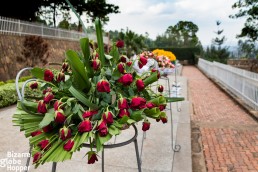
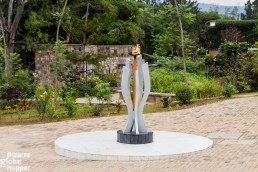
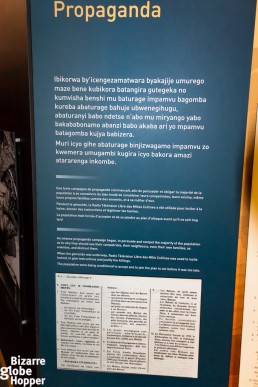
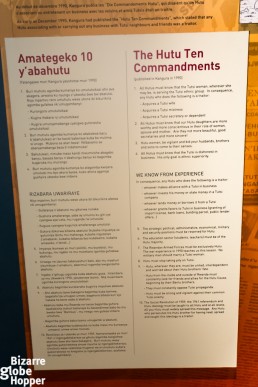
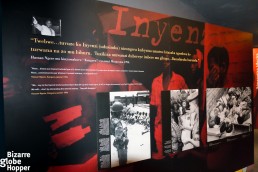
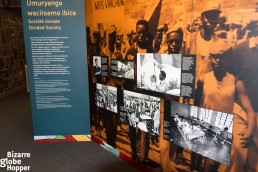
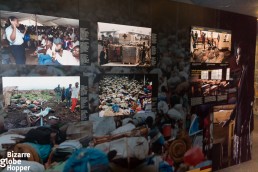
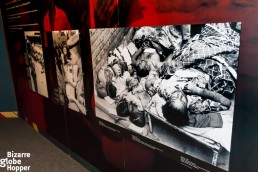

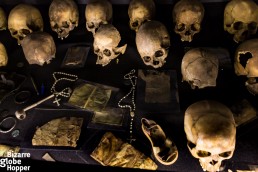
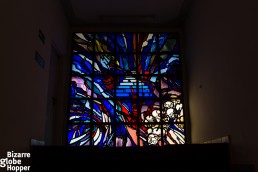
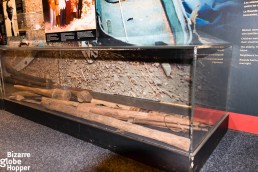
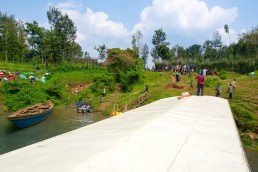
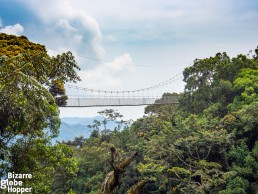
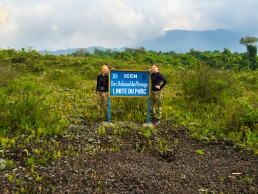
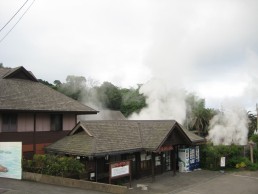
Great piece and appreciate all the pictures. I remember when the genocide happened and it was heart breaking. Now everyone can see and read about what really happened. Thank you for sharing.
Hi, Marc. Thanks for stopping by and reading. I’m glad you liked this piece. We feel that it’s important to write also about the “darker” matters and spread the knowledge.
This was a very interesting article, on a topic I wish more travel bloggers would write about – Dark Tourism. As travel writers we often deliver the world to our readers in rose-coloured glasses, but memorials like the one in Kigali, or the Holocaust Museum in Israel, or the Killing Fields in Cambodia, these are important to note. These countries are working through some seriously heavy socio-economic, and humanist issues. Nicely done.
Hi, Jordana! Thanks for your comment, I’m glad you liked this piece. Yes, sometimes we have to also see the darker side. It’s surely not all shine and happiness, though. And I agree with you that we as travel writers should also show more of the realities of the societies and countries we visit. It would also balance the picture we create to others.
Excellent article! Glad to know that at least there is a memorial. It is an example of how conflicts in different parts of the world stem from historical events (sometimes centuries old).
Thanks so much, Wayne! I’m glad you liked it. Yes, many times the big events have roots deeper than we usually see. There are many more memorials around Rwanda though this one in Kigali is the most known, I think.